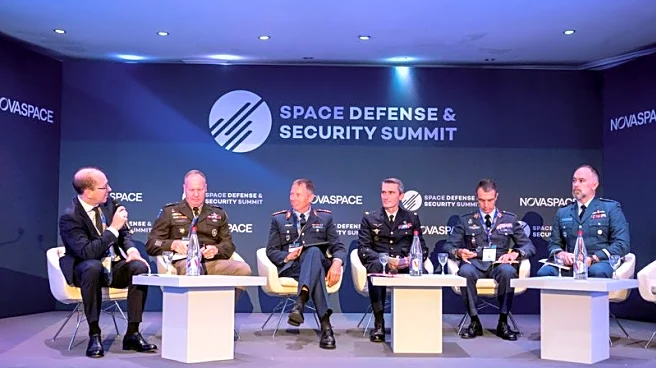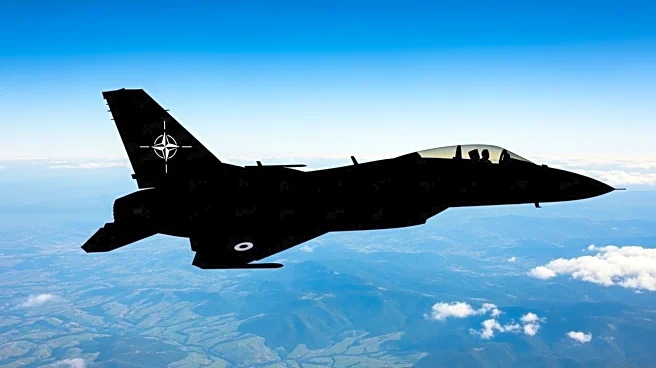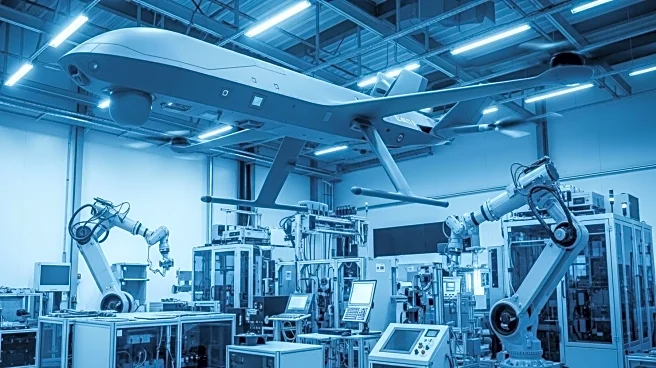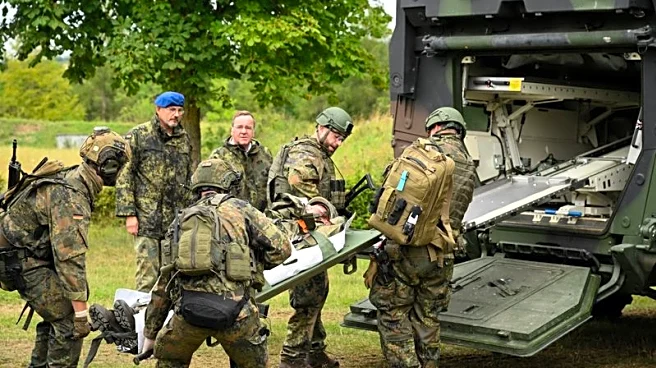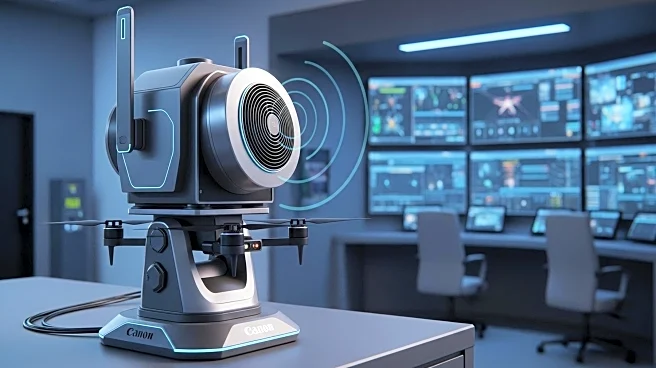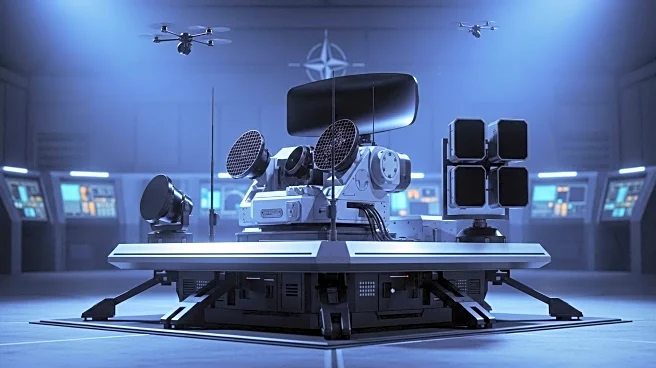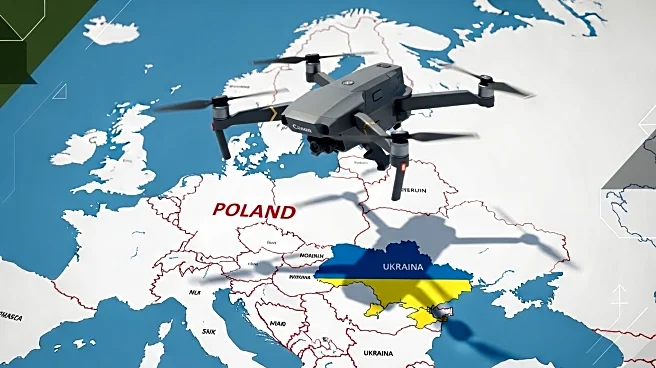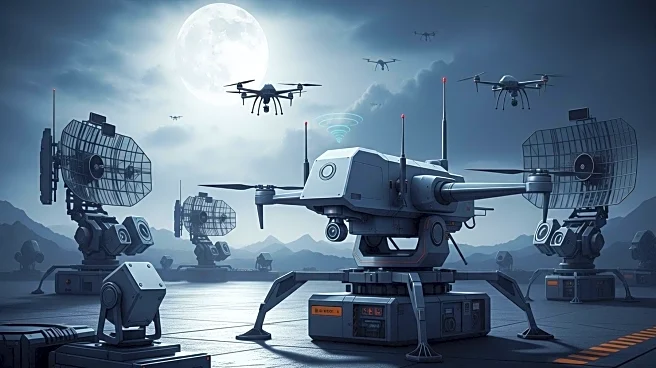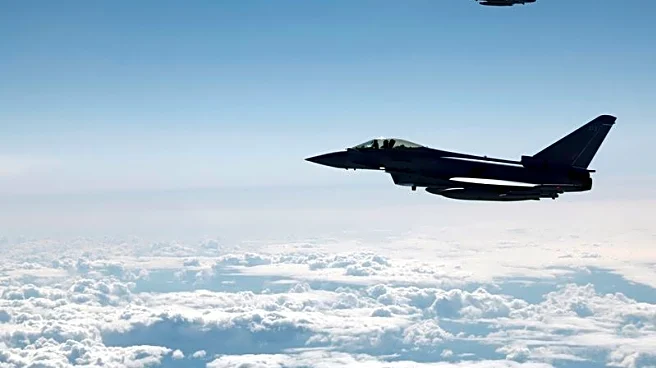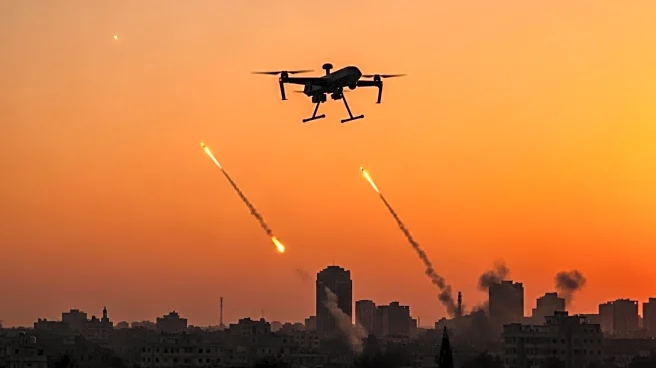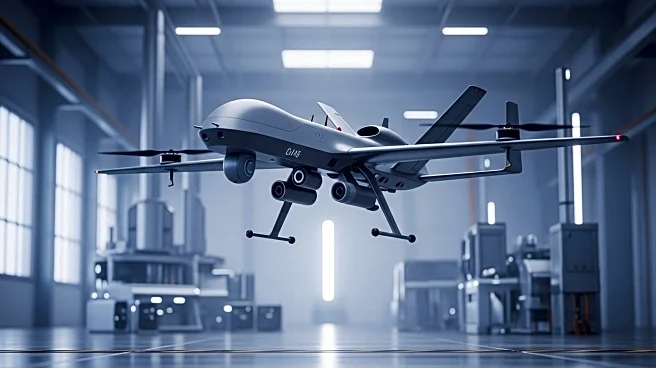What is the story about?
What's Happening?
NATO and its member states are deriving significant lessons from the ongoing Russia-Ukraine war, particularly in the areas of defense capability and operational strategies. A senior NATO official, Admiral Sir Keith Blount, Deputy Supreme Allied Commander Europe, shared insights at the Defence and Security Equipment International (DSEI) 2025 exhibition in London. He emphasized the importance of rapid mass production of weapons and the continuous innovation in military technology. The conflict has seen an unprecedented scale of remote and autonomous systems, notably drones, which have become central to various military operations. Ukraine's drone production has surged from 800,000 units annually in 2023 to an expected five million this year. These unmanned systems are being utilized for diverse tasks, including resupply, medical support, surveillance, reconnaissance, and offensive operations. Notably, Ukraine demonstrated the capability to conduct an unmanned ground assault that captured and held territory without casualties.
Why It's Important?
The insights from the Russia-Ukraine conflict underscore the evolving nature of warfare, where technology and mass production play crucial roles. The increased use of drones and autonomous systems represents a shift in military tactics, potentially influencing global defense strategies. NATO's focus on these developments highlights the need for member states to adapt to new technological paradigms to maintain a competitive edge. The ability to produce and deploy large quantities of advanced weaponry quickly is becoming a strategic necessity. This shift could impact defense budgets, procurement policies, and international military collaborations, as countries strive to enhance their capabilities in response to emerging threats.
What's Next?
As NATO continues to analyze the lessons from the Ukraine conflict, member states may prioritize investments in drone technology and autonomous systems. This could lead to increased collaboration among NATO countries to develop and share technological advancements. Additionally, the focus on mass production may drive changes in defense manufacturing processes, emphasizing speed and efficiency. Political leaders and defense agencies might also explore new policies to support rapid technological innovation and integration into military operations. The ongoing conflict serves as a catalyst for rethinking traditional military strategies and adapting to modern warfare demands.
Beyond the Headlines
The reliance on unmanned systems raises ethical and legal questions regarding their use in warfare. The ability to conduct operations without human casualties challenges existing norms and may lead to debates on the rules of engagement and accountability. Furthermore, the technological arms race could exacerbate geopolitical tensions, as nations vie for superiority in military capabilities. The long-term implications of these developments could reshape global security dynamics, influencing alliances and power balances.
AI Generated Content
Do you find this article useful?



